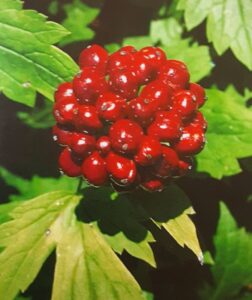How to Propagate Actaea rubra

Propagating Actaea rubra: Red Baneberry’s Reproductive Challenges and Triumphs
Introduction:
Actaea rubra, commonly known as red baneberry, is a captivating herbaceous perennial prized for its striking clusters of bright red berries (contrasting with the white berries of its close relative, Actaea pachypoda) and attractive foliage. Its dramatic appearance makes it a popular choice among gardeners seeking to add a touch of wild elegance to their landscapes, particularly in woodland gardens or shaded borders. However, propagating this plant presents unique challenges, making successful cultivation all the more rewarding. The plant’s toxicity, particularly in its berries, should be noted and precautions taken to avoid ingestion, especially by children and pets.
Seed Germination:
Seed germination for Actaea rubra is possible but notoriously challenging. The seeds possess a hard seed coat and require a period of cold stratification to break dormancy. This means mimicking the natural winter conditions experienced by the seeds in their wild environment.
Challenges: Low germination rates are common, even with proper stratification. Seed viability can also be a factor, varying between seed batches.
Practical Tips: Collect ripe berries in late summer/early autumn. Clean the seeds and subject them to a period of moist cold stratification for at least three months, ideally at temperatures between 33-41°F (0-5°C). Afterward, sow seeds in a well-drained seed-starting mix and maintain consistently moist conditions. Germination may take several weeks to several months.
Rewards: Successfully germinated seeds offer the highest level of genetic diversity, potentially leading to plants with unique characteristics. It also presents a viable option for large-scale propagation if germination rates can be improved through experimentation with stratification techniques and seed treatments.
Cuttings:
Currently, there are no known reliable methods for propagation of Actaea rubra from cuttings. The plant’s physiology makes it difficult to root stem cuttings effectively.
Division:
Division is a reliable method for propagating Actaea rubra. Mature plants readily produce new shoots and roots, making division relatively straightforward provided you follow best practices.
Challenges: Division is only possible for established plants, limiting the number of propagules obtainable from a single plant. Improper division may compromise the health of the parent plant or newly divided sections.
Practical Tips: Divide the plant in early spring or late autumn when the plant is dormant. Ensure each division has ample roots and several healthy growth buds. Plant the divisions in a well-drained, slightly acidic soil in a shady or partially shaded location.
Rewards: Division offers a faster and more reliable method of propagation compared to seed germination, providing a good option for increasing the number of Actaea rubra plants in a garden setting.
Tissue Culture:
While tissue culture offers high potential for large scale propagation, it’s a highly specialized technique requiring sterile conditions, specific nutrient media, and technical expertise. There is limited publicly available information on its effectiveness with Actaea rubra.
Challenges: The establishment of a sterile culture and the development of a successful protocol for Actaea rubra requires significant laboratory equipment and specialized knowledge. Costs associated with this method can also be prohibitive.
Practical Tips: This method requires professional expertise and specialized facilities not readily accessible to home gardeners.
Conclusion:
Propagating Actaea rubra presents unique challenges, with seed germination proving particularly difficult. However, division offers a reliable approach for the home gardener. Tissue culture remains under-explored, representing a potentially high-yield method but requiring advanced expertise and resources. Ultimately, the rewards of successfully cultivating this plant–achieving that striking display of red berries in your garden– far outweigh the initial difficulties. The sense of accomplishment gained from coaxing this plant to thrive, whether through seed germination, division, or other advanced techniques, makes the process exceptionally fulfilling for the dedicated gardener. Patience, persistence, and attention to detail are your greatest assets in your propagation endeavors.